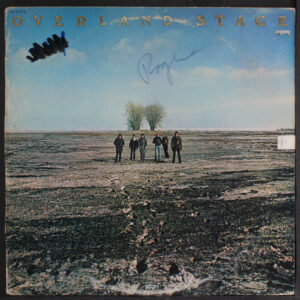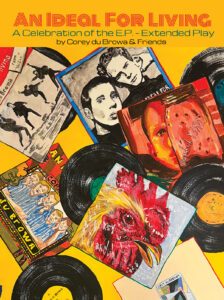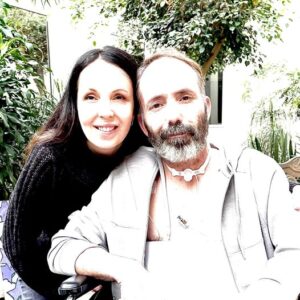.
.
[Apichatpong Weerasethakul just won the Palm D’or–the top prize–at Cannes for his feature film “Uncle Boonmee Who Can Recall His Past Lives,” which opens June 17th at the Northwest Film Forum in Seattle.]
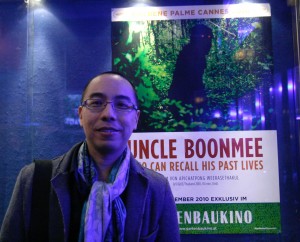 The Northwest Film Forum’s first screening of Thai filmmaker Apichatpong Weerasethakul’s short films, Program 1, saw four people walk out before the lights came up (though one only went for more popcorn). It also saw the crowd sitting in the dark for roughly ten minutes while the projectionist figured out how to work the Beta-SP projector. Funny, said a woman behind me, they told us the film we’re about to watch had no sound, but now we find out it’s got no picture, no content, at all.
The Northwest Film Forum’s first screening of Thai filmmaker Apichatpong Weerasethakul’s short films, Program 1, saw four people walk out before the lights came up (though one only went for more popcorn). It also saw the crowd sitting in the dark for roughly ten minutes while the projectionist figured out how to work the Beta-SP projector. Funny, said a woman behind me, they told us the film we’re about to watch had no sound, but now we find out it’s got no picture, no content, at all.
That silent film eventually started up. Called “Windows,” Weerasethakul’s first video short, it consists of a strobe light flashing outside a set of windows, moving along the glass, along and behind the leading, producing sprays of immaculate patterns, changing slightly at each pulse. For the grand finale he moves the light inside, advancing towards the windows rather than through them, clear white now, the spectacular patterns lost, an unstoppable rotary blade stripping the mundane room furnishings of all intrigue or mystique.
The Weerasethakul shorts with people in them sometimes confound (though I don’t approve, I could see the point of view of the walk-outs), as they depict, I think, the director’s early struggles to integrate his unmistakably warm and humanist look at everyday life with his avant-garde compulsions. He places great faith in his collaborators—a kid with a tape recorder for the “Malee And The Boy,” short, echoing his involvement of an entire community in his feature “Mysterious Object At Noon”—without understanding, or caring, that they don’t always share his gifts for successful structure and juxtaposition. Enough intriguing material emerges, though, as the viewer tracks the filmmaker through experimentation, through ideas that ended up in his features, and towards the culmination of “Syndromes And A Century,” his most recent feature, which finally reconciled his heart with his fantastical head.
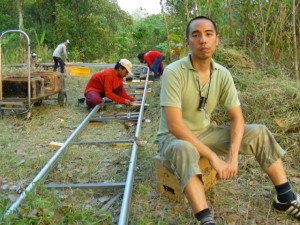 “Weerasethakul’s films explore perception, impermanence and the imaginary, cultivating fanciful potential within the mundane,” explains Northwest Film Forum programmer Adam Sekuler, who worked on the shorts series. “His abstract interchanges interrogate conventions of cinematic narrative while exploring desire, reality and a kind of melancholy perhaps peculiar to our times. Over the last several years Apichatpong has moved from an obscure object in the cinematic canon to one of the leading filmmakers working today. Yet unlike many of his contemporaries, he still hasn’t abandoned the short form.” And indeed, crucial ideas like collaboration with non-professionals spill over between the filmmaker’s shorts and features.
“Weerasethakul’s films explore perception, impermanence and the imaginary, cultivating fanciful potential within the mundane,” explains Northwest Film Forum programmer Adam Sekuler, who worked on the shorts series. “His abstract interchanges interrogate conventions of cinematic narrative while exploring desire, reality and a kind of melancholy perhaps peculiar to our times. Over the last several years Apichatpong has moved from an obscure object in the cinematic canon to one of the leading filmmakers working today. Yet unlike many of his contemporaries, he still hasn’t abandoned the short form.” And indeed, crucial ideas like collaboration with non-professionals spill over between the filmmaker’s shorts and features.
Asked about the connection between the two forms, Weerasethaukl responds, “I like freedom in making films. I try to retain these feelings from making short films over to the features as much as possible. Of course it is different because there are many more people and equipment with the features. But my crew are used to my style now–that everything can be changed every minute.” Or as Sekuler puts it, “It’s as though you’re reading a novel in your own language, but you can’t exactly decipher what the words mean together, yet somehow the words seem to resemble a poem you heard one night in a dream.”
.
.
